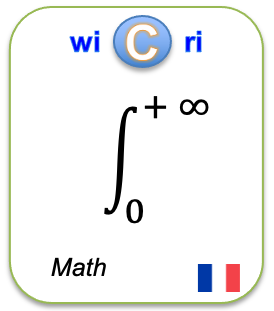Principle of Continuity: Sixteenth–Nineteenth Centuries
Identifieur interne : 000147 ( Main/Exploration ); précédent : 000146; suivant : 000148Principle of Continuity: Sixteenth–Nineteenth Centuries
Auteurs : Israel Kleiner [Canada]Source :
Abstract
Abstract: The Principle of Continuity was a very broad law, used widely and importantly – though often not explicitly formulated – throughout the seventeenth, eighteenth, and nineteenth centuries. In general terms, the Principle of Continuity says that what holds in a given case continues to hold in what appear to be like cases. Specifically, it maintains that (1) What is true for positive numbers is true for negative numbers. (2) What is true for real numbers is true for complex numbers. (3) What is true up to the limit is true at the limit. (4) What is true for finite quantities is true for infinitely small and infinitely large quantities. (5) What is true for polynomials is true for power series. (6) What is true for a given figure is true for a figure obtained from it by continuous motion. (7) What is true for ordinary integers is true for (say) Gaussian integers.
Url:
DOI: 10.1007/978-0-8176-8268-2_9
Affiliations:
Links toward previous steps (curation, corpus...)
- to stream Istex, to step Corpus: 001739
- to stream Istex, to step Curation: 001739
- to stream Istex, to step Checkpoint: 000113
- to stream Main, to step Merge: 000147
- to stream Main, to step Curation: 000147
Le document en format XML
<record><TEI wicri:istexFullTextTei="biblStruct"><teiHeader><fileDesc><titleStmt><title xml:lang="en">Principle of Continuity: Sixteenth–Nineteenth Centuries</title><author><name sortKey="Kleiner, Israel" sort="Kleiner, Israel" uniqKey="Kleiner I" first="Israel" last="Kleiner">Israel Kleiner</name></author></titleStmt><publicationStmt><idno type="wicri:source">ISTEX</idno><idno type="RBID">ISTEX:723BFD06F26529A189DBA1A10C7B321B3F54220B</idno><date when="2012" year="2012">2012</date><idno type="doi">10.1007/978-0-8176-8268-2_9</idno><idno type="url">https://api.istex.fr/document/723BFD06F26529A189DBA1A10C7B321B3F54220B/fulltext/pdf</idno><idno type="wicri:Area/Istex/Corpus">001739</idno><idno type="wicri:explorRef" wicri:stream="Istex" wicri:step="Corpus" wicri:corpus="ISTEX">001739</idno><idno type="wicri:Area/Istex/Curation">001739</idno><idno type="wicri:Area/Istex/Checkpoint">000113</idno><idno type="wicri:explorRef" wicri:stream="Istex" wicri:step="Checkpoint">000113</idno><idno type="wicri:Area/Main/Merge">000147</idno><idno type="wicri:Area/Main/Curation">000147</idno><idno type="wicri:Area/Main/Exploration">000147</idno></publicationStmt><sourceDesc><biblStruct><analytic><title level="a" type="main" xml:lang="en">Principle of Continuity: Sixteenth–Nineteenth Centuries</title><author><name sortKey="Kleiner, Israel" sort="Kleiner, Israel" uniqKey="Kleiner I" first="Israel" last="Kleiner">Israel Kleiner</name><affiliation wicri:level="1"><country xml:lang="fr">Canada</country><wicri:regionArea>Department of Mathematics and Statistics, York University, M3J 1P3, Toronto, ON</wicri:regionArea><wicri:noRegion>ON</wicri:noRegion></affiliation><affiliation></affiliation></author></analytic><monogr></monogr></biblStruct></sourceDesc></fileDesc><profileDesc><textClass></textClass><langUsage><language ident="en">en</language></langUsage></profileDesc></teiHeader><front><div type="abstract" xml:lang="en">Abstract: The Principle of Continuity was a very broad law, used widely and importantly – though often not explicitly formulated – throughout the seventeenth, eighteenth, and nineteenth centuries. In general terms, the Principle of Continuity says that what holds in a given case continues to hold in what appear to be like cases. Specifically, it maintains that (1) What is true for positive numbers is true for negative numbers. (2) What is true for real numbers is true for complex numbers. (3) What is true up to the limit is true at the limit. (4) What is true for finite quantities is true for infinitely small and infinitely large quantities. (5) What is true for polynomials is true for power series. (6) What is true for a given figure is true for a figure obtained from it by continuous motion. (7) What is true for ordinary integers is true for (say) Gaussian integers.</div></front></TEI><affiliations><list><country><li>Canada</li></country></list><tree><country name="Canada"><noRegion><name sortKey="Kleiner, Israel" sort="Kleiner, Israel" uniqKey="Kleiner I" first="Israel" last="Kleiner">Israel Kleiner</name></noRegion></country></tree></affiliations></record>Pour manipuler ce document sous Unix (Dilib)
EXPLOR_STEP=$WICRI_ROOT/Wicri/Mathematiques/explor/BourbakiV1/Data/Main/Exploration
HfdSelect -h $EXPLOR_STEP/biblio.hfd -nk 000147 | SxmlIndent | more
Ou
HfdSelect -h $EXPLOR_AREA/Data/Main/Exploration/biblio.hfd -nk 000147 | SxmlIndent | more
Pour mettre un lien sur cette page dans le réseau Wicri
{{Explor lien
|wiki= Wicri/Mathematiques
|area= BourbakiV1
|flux= Main
|étape= Exploration
|type= RBID
|clé= ISTEX:723BFD06F26529A189DBA1A10C7B321B3F54220B
|texte= Principle of Continuity: Sixteenth–Nineteenth Centuries
}}
|
| This area was generated with Dilib version V0.6.33. | |



